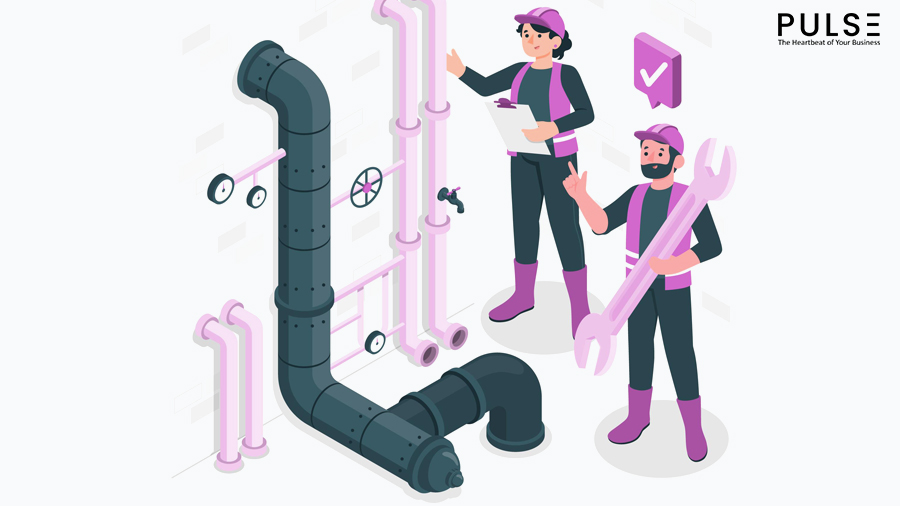While buying a home, we often tend to overlook inspections of electrical appliances or plumbing, etc. However, this attitude can later cost us a fortune when there is a breakdown.
So, to avoid such scenarios, we need to get inspections done before and after moving into our new homes. And to our benefit, there are tools that we can take advantage of to get those inspections done.
A plumbing inspection checklist does just that. It helps ensure an effective plumbing inspection and makes the job of any certified plumber simpler. Read on to learn more about how and why you should use a plumbing inspection checklist.
What is a Plumbing Checklist?
Before we dive into talking about the purpose of a plumbing inspection checklist, you need to understand what a plumbing inspection means. A plumbing inspection generally gets regulated by building owners, during which a certified plumber will inspect the pipelines, water heater, drainage system, etc. Once the plumber’s finish their inspection, the building owners get an overview of all the things that need to get replaced or fixed. That way, you can have the luxury of not having to deal with something that you want to avoid and have the plumber worry about it instead.
And just as the name implies, a plumbing inspection checklist is what Certified Plumbers use to record the evaluation process and identify any issues, if there. It is a tool that assists Plumbers in making their inspection process hassle-free and accurate.
Why Do You Need to Perform a Plumbing Inspection?
When you conduct a routine plumbing inspection, it assures that your system is running smoothly. And you are free from having to worry about anything going wrong with your plumbing system.
Any Plumbing fixation or replacement can cost a fortune, so when it comes to running your property smoothly, you want to cut costs and maintain precautions as much as you can. And allowing a certified Plumber to do that job for you helps execute the evaluation task more accurately.
What to Expect
During a plumbing inspection, a trained plumber will evaluate water runs throughout and outside the property, including pipes, sinks, toilets, etc. The evaluation drill may start by shutting down the water supply and checking for any pipe damage or leaks throughout the property.
Next, they may assess the sewer or drainage lines to evaluate the plumbing system and see for any septic tanks, curb connections, or drainage damage. If the plumber finds any fixtures that need to get replaced, then act accordingly.
How Do You Use It?
A plumbing inspection checklist comprises safety measures that maintain regulatory standards between meeting industry level standards and client expectations. During the evaluation drill, the certified plumber will run all the visibly accessible items through industry-standard tests.
Through running all the accessible systems through the checklist, they identify all the issues and determine units that need replacing or fixing.
A digitized plumbing inspection checklist consists of all the necessary steps or processes that a trained inspector needs to follow to determine any faults in the system.
While using the inspection checklist, the safety coordinator will inspect everything in a definite order in line with the program and tick off processes as he ensures each one. Once all the steps get ticked off, the trained plumber will report back to the higher authorities.
Benefits of the Plumbing Checklist
When you get a plumbing inspection performed on the property, it helps you understand the overall condition of the estate so you can make an informed decision.
In this regard, a plumbing inspection checklist, other than simplifying the work for the certified plumbers, ensures quality discipline. It gives you the added benefit of achieving an unbiased, accurate result.
Moreover, a digitized checklist will save Safety Inspectors from the hassle of maintaining paperwork. It is easy to use, and you can record the information for further usage as well.
Plumbing Maintenance Tips
Your plumbing system is prone to damage, regardless of when you had the system replaced or fixed. And that is why you need to maintain precautions even after getting inspections done. Lucky for you, there are ways you can preserve your property and mitigate the chances of getting plumbing damage.
You can start with routinely checking the pipes, faucets, and hoses for water leakage. Next, you can evaluate if the color of the water is anything but transparent, which might be a sign of rust within the pipelines. Moreover, routinely inspect if there is less water pressure and blockage within the drainage system or non-functioning toilets.
And to preserve it you can drain the water heater. Moreover, you can limit the usage of chemical clog removal products. Lastly, you can clean the gutter to avoid getting any blockage.
All of these processes ought to help you in maintaining a well-functioning plumbing system.
Grab the plumbing checklist below.
